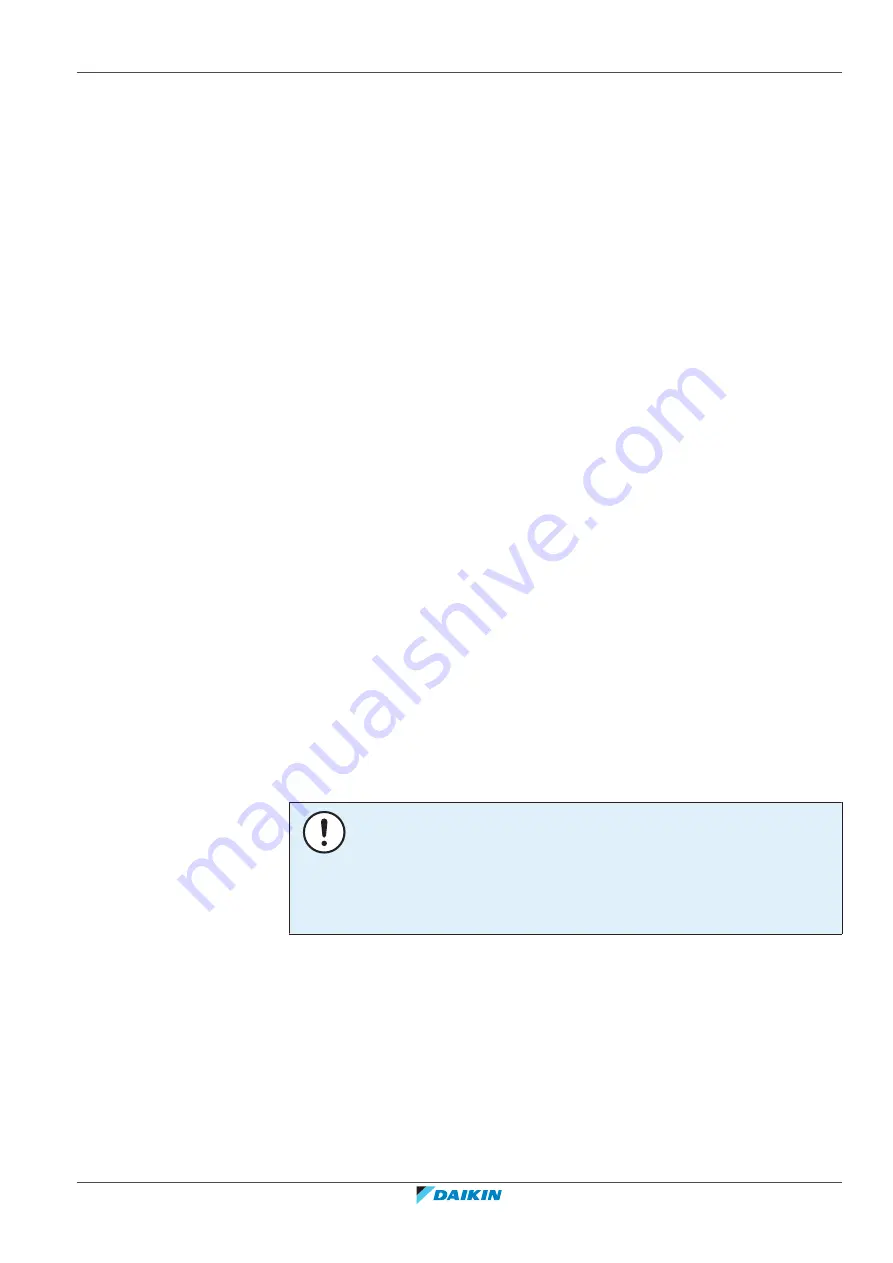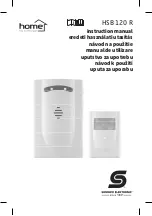
5
|
Maintenance
Service manual
377
REYQ8~20+REMQ5U7Y1B
VRV IV+ Heat Recovery
ESIE18-15B – 2020.05
5.3 Maintenance procedures for indoor units
5.3.1 To check the general status of the unit
Prerequisite:
Switch off all the indoor units.
Prerequisite:
Stop the unit operation (via the user interface, central controller,
operation switch, …).
1
"5.3.2 To clean the cover plates"
378].
2
Check if any other equipment interferes with the operation of the indoor unit
(other device exhaust towards indoor unit heat exchanger, oil mist, water
vapour etc, corrosive or explosive ambient, electrical equipment, blocked air
outlets or inlets, etc…) Refer to installation manual.
3
Make sure that there is sufficient air flow or no air by-pass on the indoor unit
heat exchanger in cooling mode.
4
Check
superheat
for
refrigerant.
Normally the expansion valve for the indoor unit is driven to keep minimum
3K
of
superheat.
If not, even if the filters are cleaned, it might be that:
-
the heat exchanger is clogged by dust (see
"5.3.3 To clean the indoor unit heat
-
an air by-pass is present,
-
the fan cannot deliver discharge air due to longer supply duct,
-
expansion valve is malfunctioning (see next step).
5
The best way to judge expansion valve bleeding is to operate indoor units in
cooling, set the dedicated indoor unit to Fan only operation and then check
refrigerant thermistors by Service Checker. Fan only operated indoor unit sets
expansion valve to 0 pulse. If the gas thermistor on the indoor unit is close to
evaporation temperature and does not rise to ambient temperature in time,
the expansion valve is bleeding and needs to be replaced.
Once check is completed switch to other indoor unit and set the operation to
Fan only and proceed in similar manner.
6
Clean the inside of the unit.
NOTICE
To clean the inside of the unit:
▪
Use water or compressed air, not warmer than 50° C.
▪
Do not use any cleaning agents or chemicals.
▪
Do not use pressurized water.
7
Check the general status inside the cover plates.
8
Check if the drain is properly drained by pouring water in the drain pan. Check
drain pan and drain piping if this is not the case.
9
Check the visual appearance of all the components. Refer to component check
methods if any irregularity is found.
10
Check the flare connections and their surrounding for oil drips and signs of
leaks.
11
Check the electrical connections. Tighten and secure the connections when
necessary.
Summary of Contents for VRV IV+
Page 473: ......
Page 474: ......
Page 475: ......
Page 476: ...ESIE18 15B 2020 05 Copyright 2020 Daikin Verantwortung für Energie und Umwelt ...
















































